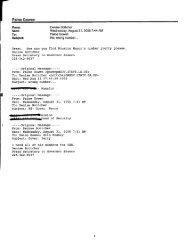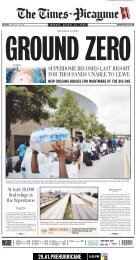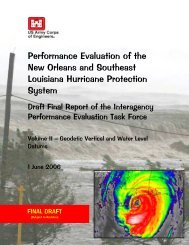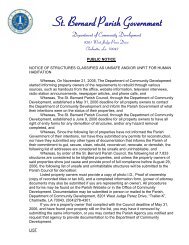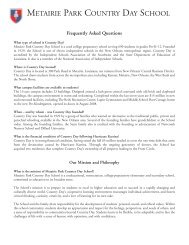IPET Report 3 Vol VIII
IPET Report 3 Vol VIII
IPET Report 3 Vol VIII
You also want an ePaper? Increase the reach of your titles
YUMPU automatically turns print PDFs into web optimized ePapers that Google loves.
The term “reliability” is intended to mean the conditional probability of a component or<br />
system performing an intended function given that a specific hurricane surge has occurred. This<br />
result can also be used to determine the conditional probability of failure. System failure refers to<br />
the failure of the HPS to provide protection from flooding in one or more protected areas and can<br />
also be thought of as the occurrence of flood inundation. The effectiveness of the protection<br />
system is also dependent upon how well the operational elements of the system performed.<br />
Elements such as road closure structures, gate operations and pumping plants, etc., that require<br />
human operation and proper installation during a flood fight can dramatically impact flood<br />
levels. The lessons learned concerning the performance of these elements during Katrina was<br />
considered in the analysis.<br />
The changed demographics of the local areas protected by the system were considered when<br />
determining the consequences. In some areas, many homes and much of the infrastructure were<br />
destroyed by the hurricane and some may not be rebuilt. Therefore, the pre-Katrina populations<br />
and property values were impacted and must be considered in the post-Katrina analysis. The<br />
Consequence Team has provided the estimated post-Katrina direct economic damage and<br />
population projections that are used in the risk analysis.<br />
“Risk” is defined as expected losses in terms of lives or dollars generally calculated by combining<br />
the probability of system failure with the consequences associated with that failure. For<br />
New Orleans, the post-Katrina risks were different due to the changing demographics noted<br />
above. In order to better compare the adequacy of the pre- and post-Katrina HPS, probability of<br />
failure and frequency of inundation mapping were used as the primary metrics by which to measure<br />
the effectiveness of repairs and improvements. The inundation mapping, and associated<br />
stage-frequency curves, are intended to be used for estimating the relative risks of flooding<br />
throughout the New Orleans area for the purpose of identifying areas of vulnerability. These<br />
estimates should not be compared to inundation mapping conducted under the Federal<br />
Emergency Management Agency’s (FEMA’s) flood insurance programs since the methods of<br />
analyses, ADCIRC grids, and number of hurricanes modeled are different. The Risk Team has<br />
coordinated with FEMA during the analyses to identify similarities and differences in the<br />
methods of analysis.<br />
Participants<br />
The following individuals actively participated on this project during the period October<br />
2005 through June 2006.<br />
Name<br />
Co-Leads<br />
Agency Role<br />
Jerry L. Foster, P.E. HQUSACE Lead Project Coordinator &<br />
Manager<br />
Bruce Muller, P.E. USBR Asst. Project Coordinator<br />
Headquarters<br />
Donald R. Dressler, P.E HQUSACE Project Sponsor<br />
<strong>Vol</strong>ume <strong>VIII</strong> Engineering and Operational Risk and Reliability Analysis <strong>VIII</strong>-3<br />
This is a preliminary report subject to revision; it does not contain final conclusions of the United States Army Corps of Engineers.



